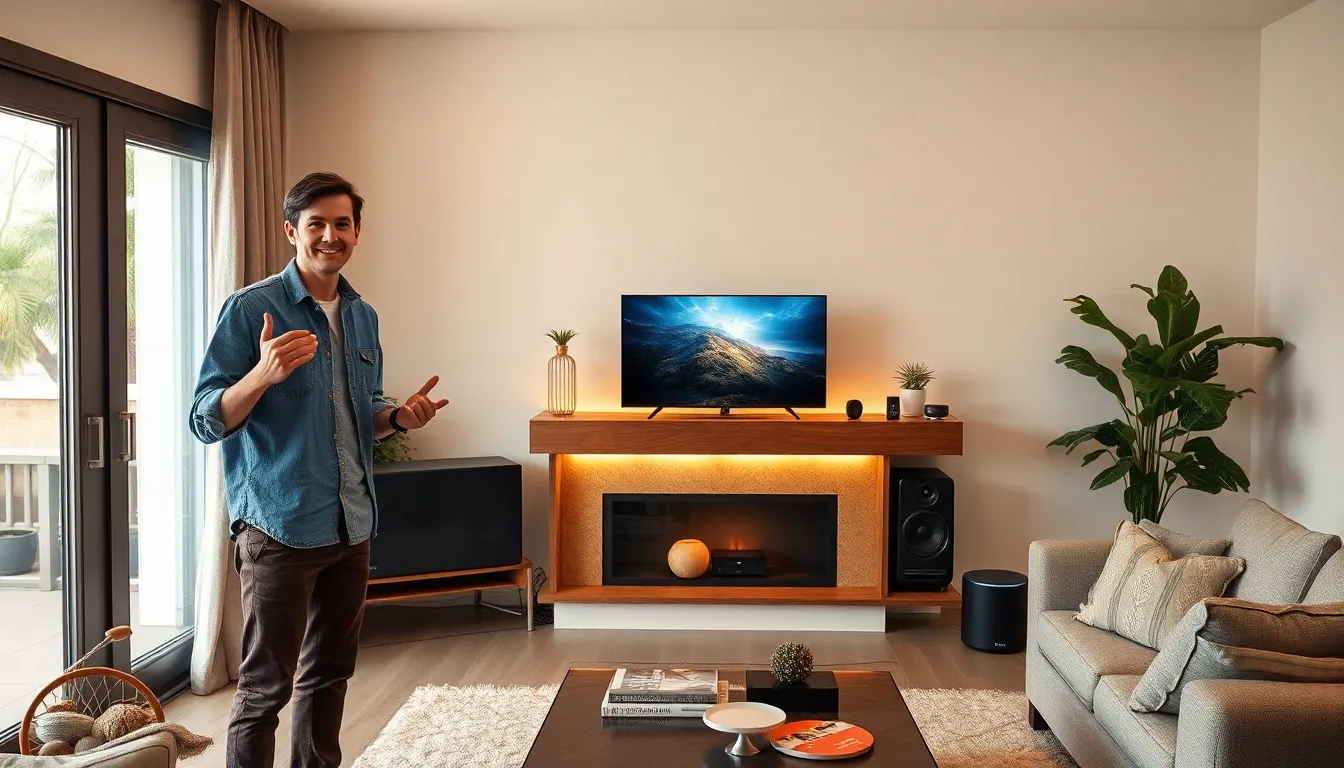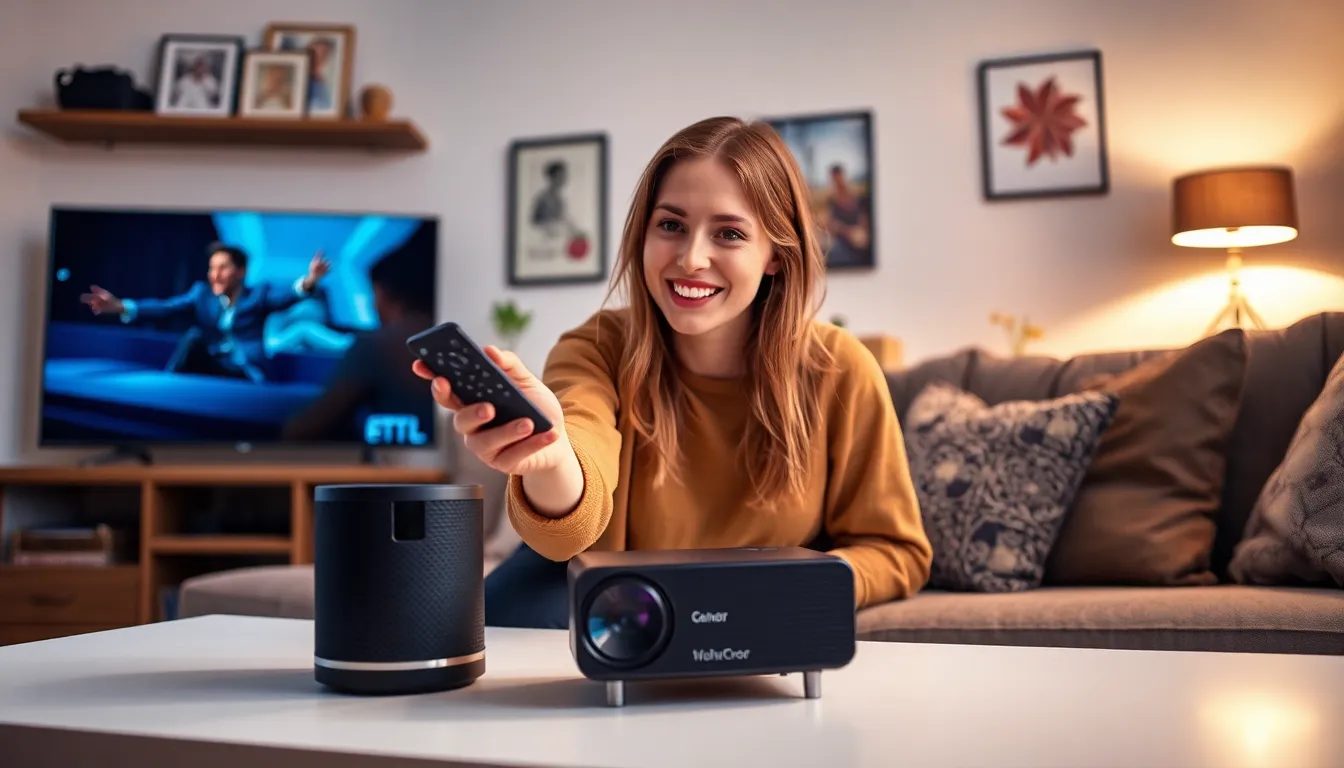Touch screen gadgets have revolutionized the way people interact with technology. From smartphones to tablets and even home appliances, these intuitive devices have made navigating digital landscapes easier and more engaging. With a simple tap or swipe, users can access a world of information and entertainment at their fingertips.
As technology continues to evolve, touch screens are becoming more sophisticated, offering enhanced responsiveness and clarity. This innovation not only improves user experience but also opens up new possibilities for creativity and productivity. Whether for work or play, touch screen gadgets are now essential tools in everyday life, shaping how people communicate, learn, and connect.
Table of Contents
ToggleOverview of Touch Screen Gadgets
Touch screen gadgets encompass a wide range of devices that utilize touch-sensitive technology for user interaction. These gadgets include smartphones, tablets, laptops, and smartwatches, making daily tasks more intuitive.
Key Features
- Interactivity: Users engage directly with the display, enabling quick navigation through various applications.
- Sensitivity: Advanced touch sensors respond to light taps, swipes, and multi-touch gestures, enhancing usability.
- Customization: Many gadgets offer customizable interfaces, allowing users to personalize their experience.
- Clarity: High-resolution displays provide sharp visuals, improving readability and overall user satisfaction.
Popular Types
- Smartphones: These handheld devices combine communication, entertainment, and productivity tools in a single gadget.
- Tablets: Larger screens offer additional functionality for gaming, reading, and creative tasks.
- Laptops: Touch screen laptops combine traditional computing with touch capabilities, catering to diverse user preferences.
- Wearables: Smartwatches and fitness bands leverage touch screens for easy access to notifications and health tracking.
Technological Advancements
- Capacitive Touch Technology: This technology uses the electrical properties of the human body for ultra-responsive touch sensitivity.
- HD and 4K Displays: High-definition screens enhance image quality, making touch interactions clearer and more vibrant.
- Haptic Feedback: Some gadgets provide tactile responses to touch, enriching user interaction through sensory engagement.
Touch screen gadgets have transformed technology interaction, making operations more efficient and enjoyable. Their prevalence in daily life fosters enhanced communication, learning, and creativity across various domains.
Popular Types of Gadgets With Touch Screen

Touch screen gadgets enhance user interaction by providing intuitive control and seamless navigation. Key categories include smartphones, tablets, laptops, desktops, smartwatches, and fitness trackers.
Smartphones and Tablets
Smartphones and tablets dominate the touch screen market, featuring high-resolution displays and responsive interfaces. Smartphones often offer capabilities such as calling, messaging, and browsing, while tablets provide larger screens ideal for watching videos and reading. Popular operating systems, including iOS and Android, ensure a wide range of applications and personalization options. Devices like the iPhone 14 and Samsung Galaxy Tab S8 illustrate the innovative design and advanced functionality prevalent in this category.
Laptops and Desktops
Laptops and desktops equipped with touch screens combine the convenience of a tablet with the power of a traditional computer. These devices typically support multi-touch gestures, enhancing productivity for tasks like scrolling and zooming. Popular models such as the Microsoft Surface Pro and Dell XPS series exemplify how touch screens integrate into professional and personal computing. These laptops often feature hybrid functionality, allowing users to switch between tablet and laptop modes effortlessly.
Smartwatches and Fitness Trackers
Smartwatches and fitness trackers incorporate touch screens to facilitate easy interaction with health and fitness applications. Users can monitor heart rates, track steps, and receive notifications with just a tap or swipe. Devices like the Apple Watch and Fitbit Versa showcase the effectiveness of touch screens in delivering quick access to vital information. Moreover, these gadgets often include customizable interfaces, making personal fitness management more engaging.
Features of Touch Screen Gadgets
Touch screen gadgets feature several advanced characteristics that enhance usability and user interaction. This section explores the main elements contributing to their effectiveness.
Screen Types and Technologies
Touch screen gadgets utilize various screen types and technologies.
- Capacitive Screens: These screens detect touch through the electrical conductivity of the human finger. They offer excellent clarity and responsiveness, commonly found in smartphones and tablets.
- Resistive Screens: These screens rely on pressure applied to the surface. While less sensitive than capacitive screens, they perform well in direct sunlight, often used in industrial devices.
- OLED Displays: Organic Light-Emitting Diode technology produces vibrant colors and deep blacks. These screens are popular in high-end smartphones and tablets due to their impressive contrast ratios.
- LCD Displays: Liquid Crystal Display technology provides a cost-effective option for many devices. They typically deliver decent brightness and clarity but may lag in color vibrancy compared to OLED.
- Multi-Touch Capabilities: Many modern screens support multi-touch gestures, allowing users to perform multiple actions simultaneously, enhancing usability across applications.
User Interface and Experience
User interface design plays a crucial role in the functionality of touch screen gadgets.
- Intuitive Navigation: Touch screens allow for straightforward gestures such as swiping, pinching, and tapping, making it easier for users to access features.
- Customizable Interfaces: Users can often personalize their home screens and applications, enhancing the user experience according to individual preferences.
- Visual Feedback: Touch screens often provide visual or haptic feedback, confirming actions and improving the interaction experience. This feedback helps users understand the response of their inputs.
- Accessibility Features: Many touch screen gadgets include features like voice control and screen magnification, accommodating various user needs and preferences, ensuring inclusivity.
- Responsive Design: Touch screens adapt their interfaces based on device orientation and user interaction, maintaining a consistent experience across different applications.
These features collectively enhance the user experience, making touch screen gadgets essential in various aspects of daily life.
Advantages of Touch Screen Gadgets
Touch screen gadgets offer numerous advantages that enhance user interaction and experience.
- Intuitive navigation: Touch screens allow for direct manipulation of content. Users can easily tap, swipe, and pinch to navigate, making tasks straightforward.
- Accessibility: Touch screen interfaces cater to diverse user needs. They enable individuals with physical disabilities to interact more effectively with technology through simple gestures.
- Enhanced responsiveness: Touch screen gadgets exhibit quick reaction times. Capacitive touch technology ensures that actions register almost instantly, reducing delays and improving workflow.
- Customizable interfaces: Users can personalize touch screens to fit their preferences. This adaptability improves usability, providing a more tailored experience.
- Portability: Many touch screen gadgets are lightweight and compact. Devices like tablets and smartphones allow users to perform tasks anywhere, enhancing convenience.
- Multimedia interaction: Touch screens serve as interactive displays for multimedia content. Users engage seamlessly with videos, photos, and games, creating an immersive experience.
- Multi-touch capabilities: Users can execute multiple gestures simultaneously. This feature boosts productivity, allowing for actions like zooming and rotating with ease.
- Visual feedback: Touch screens often provide immediate visual responses to user actions. This confirmation enhances the understanding of interactions, making technology more user-friendly.
- Reduced physical components: The sleek design of touch screens eliminates the need for physical buttons, allowing for a more modern, streamlined appearance.
These advantages position touch screen gadgets as vital tools in today’s technological landscape, enriching communication, learning, and creative processes.
Disadvantages of Touch Screen Gadgets
Touch screen gadgets come with certain drawbacks. These disadvantages can affect usability and user satisfaction, influencing overall device performance.
- Accuracy Issues: Touch screens can suffer from accuracy problems. Users might select the wrong item due to finger size or screen sensitivity. This is particularly cumbersome for tasks requiring precision, such as graphic design or detailed editing.
- Durability Concerns: Touch screens are often less durable than traditional interfaces. They are prone to scratches and cracks, especially when dropped. Users may need to invest in cases or screen protectors to enhance longevity.
- Battery Drain: Touch screen devices commonly consume more battery power. High-resolution displays and continuous touch sensitivity can lead to faster battery depletion, requiring frequent recharging.
- Limited Feedback: Touch screens provide less tactile feedback compared to physical keyboards or buttons. This absence of physical cues can hinder typing speed and accuracy, especially for users accustomed to mechanical interfaces.
- Finger Smudges: Touch screens attract fingerprints and smudges, which can obstruct visibility and require regular cleaning. This maintenance can be inconvenient and detracts from clarity.
- Cost Considerations: Touch screen gadgets typically carry a higher price point than non-touch alternatives. The advanced technology and components involved in manufacturing these devices contribute to increased costs.
- Privacy Concerns: Touch screens can pose privacy risks in public settings. Users might inadvertently expose personal information through accidental touches or reflections, raising concerns about data security.
Each of these disadvantages highlights areas where touch screen gadgets may fall short, emphasizing the importance of considering both pros and cons before adoption.
Touch screen gadgets have undeniably reshaped how individuals interact with technology. Their intuitive design and advanced features make everyday tasks more accessible and engaging. As these devices continue to evolve, users can expect even greater enhancements in functionality and usability.
While challenges such as durability and accuracy remain, the benefits of touch screen technology far outweigh the drawbacks. From smartphones to smartwatches, these gadgets not only streamline communication and productivity but also foster creativity and learning. Embracing touch screen technology opens up new possibilities for users in both personal and professional realms.




